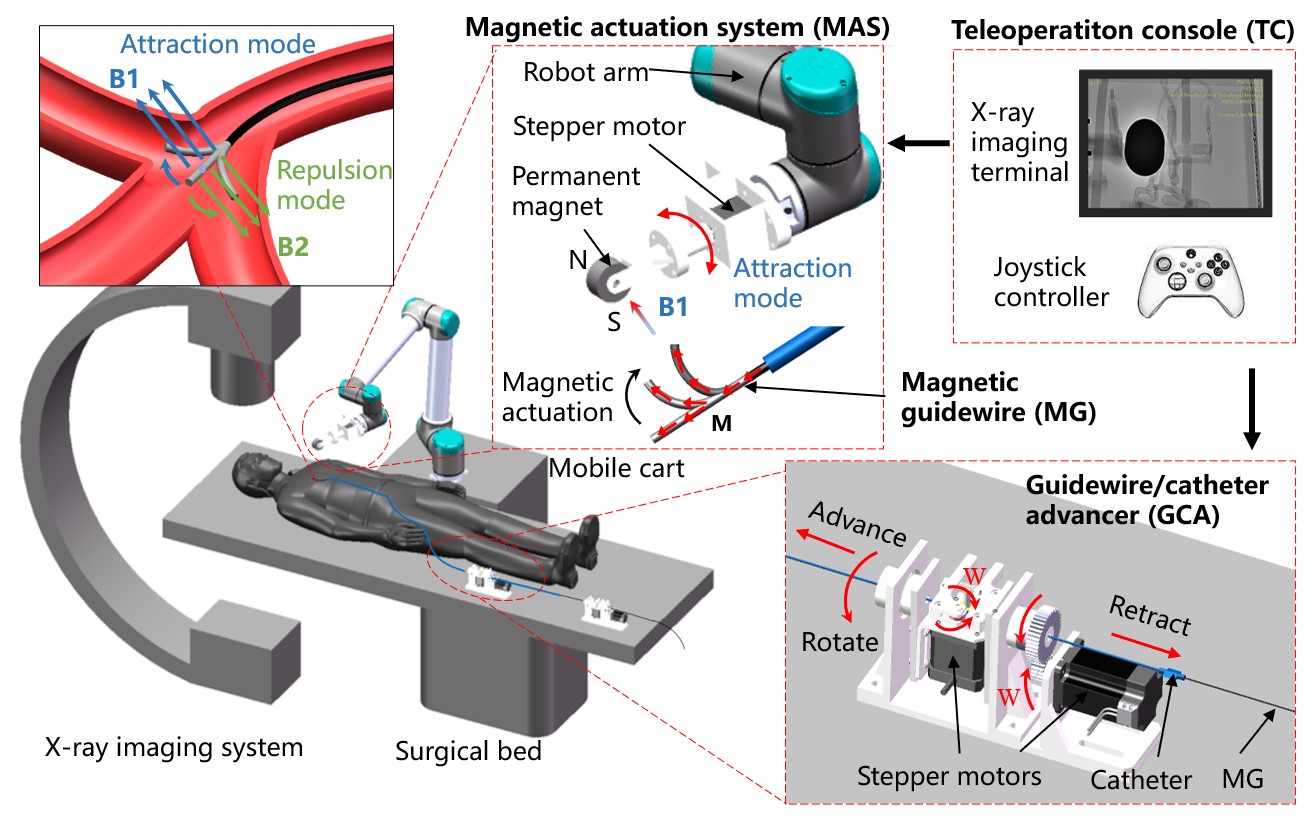A Magnetically Controlled Guidewire Robot System for Vascular Interventional Surgery
Date:08-09-2023 | 【Print】 【close】
A research group led by Prof. Tiantian Xu from the Shenzhen Institute of Advanced Technology (SIAT) of the Chinese Academy of Sciences and Prof. Shiwei Du from South China Hospital of Shenzhen University proposed a magnetically controlled guidewire robot system with magnetically active steering and autonomous propulsion capabilities. The system allows interventionalists to remotely steer the magnetic guidewire to quickly select the correct path through complex vascular bifurcations and reach the target site, effectively reducing the radiation exposure to physicians and supporting for remote areas.
The study was published in Advanced Intelligent Systems on Aug. 31.
Vascular interventional surgery is an operation technique that utilizes guidewires, catheters and other instruments to diagnose and treat via the vascular route under the guidance of medical imaging equipment. Neurointerventional surgery is an important means of treating various cerebrovascular diseases. However, this surgery requires a high level of experience from doctors. Interventional medical resources are scarce in remote areas. And doctors need to observe the position of the guidewire under contrast, so that the accumulated radiation is detrimental to health.
Herein, the researchers proposed a magnetically controlled guidewire robotic system (MCGRS) with steering and propulsion capabilities based on adequate modeling and trajectory planning methods.
They attached a section of magnetic hydrogel material to the tip of the guidewire to make the medical interventional guidewire magnetically responsive, allowing it to be flexibly steered under an external magnetic field and to provide feedback on its position via an imaging system.
Then they combined dipole model and Cosserat-rod model to create continuum mechanics model to predict the tip deformation of guidewire. Meanwhile, the trajectory planning algorithm was developed to obtain the positional trajectory of the external magnet and propulsion speed of advancer to realize autonomous control based on the vascular pathway.
Furthermore, they confirmed that the proposed model could predict and reconstruct the nonlinear deformation of the guidewire tip through magnetic field characterization and steering characterization experiments.
The researchers realized the autonomous control of the magnetic guidewire, which was controlled by a magnetic field to reach the four target locations of the middle cerebral artery from the puncture point through four different paths in a 3D vascular phantom according to the known vascular paths, and the arrival time was less than 2 minutes. They also realized remote control of the magnetic guidewire. The interventionalist remotely controlled the magnetic guidewire through the right internal carotid artery of the vascular phantom to reach the target location under real-time guidance of DSA imaging outside the operating room, and the whole process took about 2 minutes.
In the future, the researchers will continue to study the intelligent control of the magnetically controlled guidewire robotic system to help doctors perform interventional procedures more efficiently and safely.

Schematic diagram of interventional surgery and the proposed magnetically controlled guidewire robot system (MCGRS). (Image by SIAT)
Media Contact:
ZHANG Xiaomin
Email:xm.zhang@siat.ac.cn